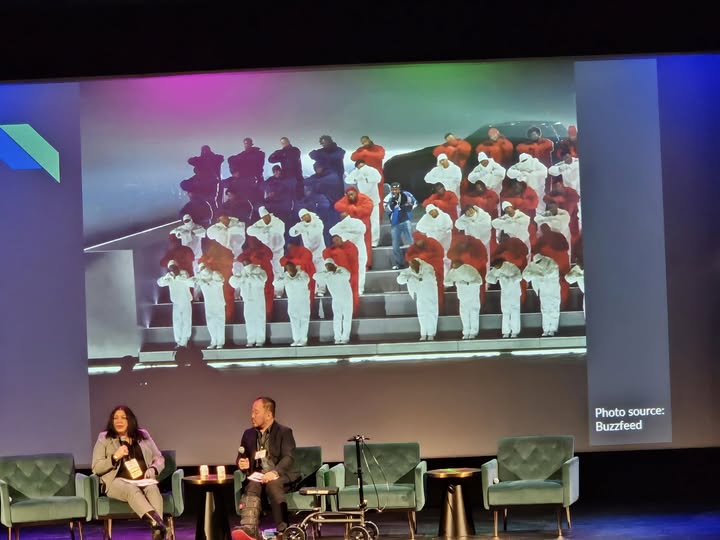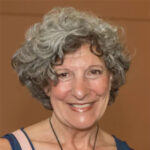
In challenging times, writers play an important role, and honing your skills makes you a better writer.
“Speaking to people is more important than ever,” said Emil Wilbekin, a journalist and Fashion Institute of Technology professor, in a key note to open day two at the ASJA 2025 conference.
“We have to ask the tough questions. Let’s hone our skills and sharpen our knives when journalism is paramount.”
Wilbekin and speakers throughout the day shared their wisdom and advice for how to improve your writing through better interviewing, storytelling, and visual and auditory elements that enhance your words.
Be a Better Interviewer
Good interviewers aren’t afraid to be human, compassionate, and real in interviews, said Wilbekin, who also founded Native Son, an organization that empowers queer Black men. Good interviews also do their homework – digging into an interview subject’s background, social media, friends, and family helps craft questions and gives you the background you need to be confident in interviews, he said.
Other tips for upping your interview game:
Have a strategy for questions, it helps ensure you get what your editor wants the story to cover, and what you feel you need, Wilbekin said.
Ask about process. For artists, makers, engineers, or other people who create or invent, asking them to explain their process can be the key that unlocks their willingness to talk about themselves, he said.
Find points of entry, something you might have in common with the subject that would make them feel comfortable opening up to you. Kenneth Miller, an ASJA member who won ASJA’s Outstanding Book award in the Biography/History category in 2024 for “Mapping the Darkness: The Visionary Scientists Who Unlocked the Mysteries of Sleep.” While he was writing it, he sensed one of the subject who’d agreed to a series of interviews was getting cold feet. He wrote a speech explaining why he thought it was important to continue. When she tried to bow out on their next call, he shared his talking points with her in such a way that she changed her mind.
Be a Better Storyteller
A key difference between an article and a story is drama, according to panelists Lane DeGregory, a Pulitzer-Prize winning journalist and feature writer for the Tampa Bay Times, and Mike Wilson, deputy editor of The New York Times feature “The Great Read,” which highlights narrative stories.
A traditional news article crams the basic facts into the very beginning to tell the reader as much as possible as quickly as possible. A story spools out the details into a distinct beginning, middle, and end, and is written in such a way that readers can’t help following to find out what happens.
Storytelling – also referred to as narrative nonfiction – might not be something writers learn in journalism school. At the New York Times, storytelling isn’t “a well developed muscle for even veteran reporters,” Wilson said.
Storytelling starts with brainstorming possible ideas for stories. But from there, it diverges from reporting and writing news articles. When DeGregory is looking for a way into covering a topic, she likes to focus on character, someone who would be a compelling figure to follow through a situation, crisis, event, or challenge. That was the case for “The Girl in the Window,” the story of young girl, found in a roach-infested room, unable to talk or feed herself, who was adopted by a new family committed to her nurturing, for which DeGregory won the 2009 Pulitzer Prize for feature writing.
Be a Better Visual Storyteller
In the age of TikTok, Instagram, and YouTube, being able to tell a story in more than words can set you apart from other writers. Luckily, technology has evolved enough that the only tool you need to be a versatile visual storyteller is a phone. “The tools are so easy, you can spend more time on the content,” said Larry Tung, speaking on a visual storytelling panel with fellow FIT professor and freelance journalist Elena Romero.
When you’re pitching an idea to an editor, think about the multimedia components you can offer along with your text, including photos, video, or audio, they said. If you’re taking pictures as part of an assignment, shoot horizontal and vertical so you can offer images that can run with the article and be repurposed on social media posts, Romero said. Get multiple shots, ranging from close ups to long shots. If you’re also shooting video, get B roll along with recording the primary subject so you can provide options for transitions.
Just as you’d prepare for an interview, think about the types of images you’d want to shoot before showing up with a camera, Tung said. When you’re shooting, remember the elements that make images powerful: composition, lighting, subject, and context.
**
Catch up on other insights on writing and freelancing with a recap of day one of the 2025 conference: Stay Optimistic in an Era of Uncertainty.

